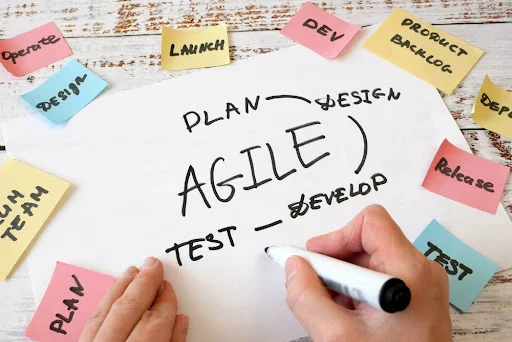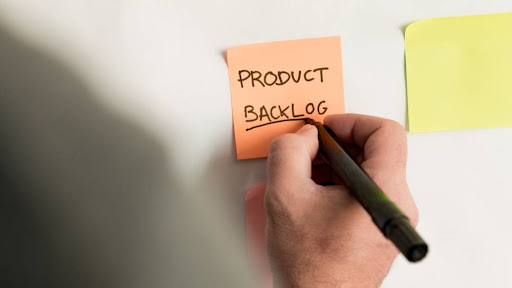The meaning of backlog in project management
As tools of the scrum methodology, we often hear about the so-called backlogs, the product backlog and the sprint backlog, but less is said about the project backlog. But what is a backlog and how can we use it effectively in project management? In our article we will now take a look at this.

The meaning of backlog
Before we get to that, let's start from the basics! A backlog is a prioritized and structured list of tasks to be completed for a project, or backlog list in English, which breaks down the work to be done in detail.
What is a project backlog?
A project backlog helps to structure the scope of the project and identify business priorities before teams spend too much time planning the details.
For longer projects, the complete work breakdown structure (WBS) may not be kept in the project backlog. Instead, they focus only on what needs to be done in a given period.
What does backlog mean from an agile perspective?
Agile methodologies mainly use product and sprint backlogs. However, traditional project-based organisations often also employ agile practices, such as working with backlogs. In this case, however, they use a project backlog instead of a product backlog.
The main difference is that the project backlog is temporary. That is, it lives for as long as the project lasts. Whereas the product backlog theoretically has no end date, but can be used continuously throughout the lifecycle of the product.

Best practices from the product backlog should be incorporated into the project backlog. For example, if you want the backlog prioritisation to be done by a single person, you should focus on:
- details of works
- estimating deadlines
- user stories/refining requirements
- prioritisation of backlog items
What is the purpose of the project backlog?
There are basically 3 objectives:
- coordinating the client side and stakeholders and teams by serving as a single, transparent source of project scope
- be flexible and adapt to changes in the project and new information as it emerges
- Help you work in a focused way
What is the difference between a project backlog, a sprint backlog and a product backlog?
There are different types of backlogs, but how do they differ?
Product backlog
The product backlog is used by agile organisations in their product development projects. It is a product requirements list, which contains descriptions of features, but can also include "wishes" and "ideas". The Product Owner is responsible for managing the product backlog: its content, availability and prioritisation of items.
The product backlog is never complete, it is constantly changing in order to determine what is needed to make the product fit and competitive. It includes all changes in features, functions, requirements, enhancements and improvements that need to be made in future releases of the product.

Sprint backlog
The Sprint Backlog is for a specific period of time, a single sprint, usually covering two weeks. It contains a list of tasks to be completed during a sprint. It makes visible all the work that the development team thinks is necessary to meet the sprint target.
Each function is broken down into sub-tasks, and then each team member chooses their own task based on the priorities, needs and expertise of the team members.
Examples of backlog items
Now let's take a look at what you need for a backlog, whether we are talking about a large or a small team!
Backlog items often contain features and bugs that are visible to customers. They may also contain research (spike) that is invisible to customers but important to teams.
Example #1: Functions
New backlog items can come from different sources. End users, customer service, sales, project management and developers can all submit new ideas to the backlog. These are often difficult to prioritise.
A balance must be struck between:
- satisfaction of existing customers
- short-term sales opportunities
- long-term project approach
As a project manager, you need to regularly review and resolve conflicting and duplicate issues. This ensures that the backlog consists of features that attract new customers and strengthen the loyalty of the existing customer base.
Example #2: Errors and omissions
So-called bugs and defects are problems discovered by end users that have slipped through quality control during development. Testing is usually done as part of each backlog item. These can be handled within a bug tracking program, but can also be included in our backlog.
Example #3: Research
Research is very useful when we know little about how to implement a new feature or concept, or when we want to try something new. Either way, circumstances require that we take the time to expand the team's knowledge.
One backlog for all projects
Planning and organisation are critical to success. The backlog should provide guidance to teams and their projects. If created and managed correctly, the backlog can be used not only for a single project, but also to scale.
As our projects get bigger, it makes sense to manage a single backlog for all of them. This helps everyone on your team navigate change, manage dependencies, increase productivity, and deliver the greatest value to both the business and the customer.
Agile trends are gaining ground in the life of projects and organisations and more and more people are opting for agile transformation. If you want to learn or deepen your knowledge of agile methodologies, choose one of our quality agile training courses!

 Designabc
Designabc